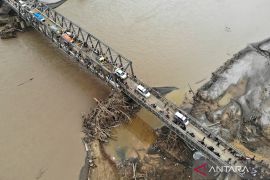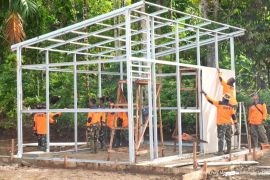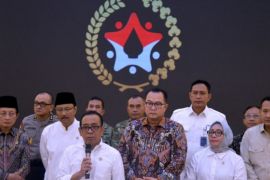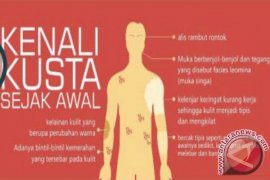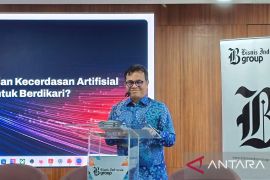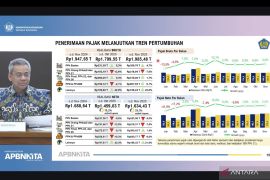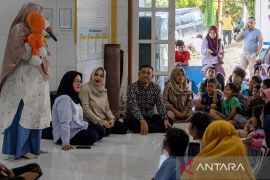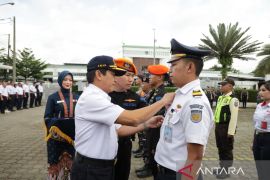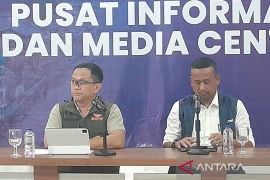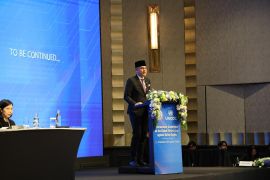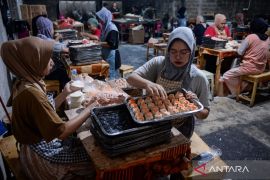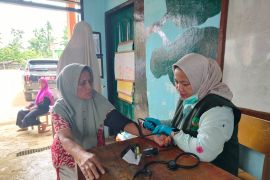The continuation of the Program is due to the assesment of the independent institutions, including the World Bank, which assessed the management of coral reefs through the Coremap program has given a significant contribution. This was conveyed by Sudirman Saad, the Director of Marine, Coastal and Small Islands (KP3K) of the Ministry of Maritime Affairs and Fisheries.
Sudirman asserted, the assessment can't be separated either from the monitoring conducted by the Indonesian Institute of Science (IIS), which showed the increasing in the biophysical indicators of COREMAP II program. The assessment was referred to the 2012 Detailed Performance Audit Reports of the Supreme Audit Board (SAB) in 2012 which was in line with the IIS' Coral Reef Information and Training Centre (CRITC) which revealed an increase of the nappe living coral of 71%, the Marine Protected Areas (MPAs) achieved an increase of 57%, while the average increase of the reef fish populations are 3% in each location. "However, we can't deny the presence of the stagnant increase of the nappe living coral in the selected districts. This is due to the issue of the climate change in the periode of 2009 - 2010 whose impact was quite significant on the coral reef ecosystems, shown by the emergence of the coral bleaching in some Indonesian waters, including the COREMAP II's districts, comprising of Wakatobi, Buton, Biak and Lingga," explained Sudirman.
According to Sudirman, the positive achievement is also manifested in the socio-economic indicators. Based on the COREMAP II's Implementation Completion Report (ICR), the Coremap program areas have shown satisfactory results on the importance of the coral reef ecosystems conservation which are proven from the public awareness indicators of achievement of 75%, exceeding the targeted 70%. Although there are some small businesses are experiencing congestion and bankrupcy, this was caused by the lack of technical knowledge on the business. Coremap has coordinated and synergized the various activities in the form of the technical training and assistance for each district's productive economic development. "In fact, according to the SAB's detailed performance reports, stated that the increase in average income by 21 percent," he explained.
Involving the Community
Sudirman pointed out, from the beginning, the Coremap always prioritize the community's participation. Based on the various activities that have been conducted, Coremap is a comprehensively-approached program combining approaches that consolidate the top-down and bottom-up structure. Coremap always gives priority to the participation of the community in order to create a healthy coral reef resources, an abundance of fish resources and the welfare of society. "A Wakatobi's study in 2009 stating that the coral reef conservation program restricts the traditional fishing access and ignores the local wisdom in the marine resource management and utilization is clearly questionable."
The prove is, Sudirman stated, in the implementation of COREMAP II, the collaboration between the local governments, communities and the Wakatobi National Park's managers Wakatobi was implemented successfully. The local communities can establish the MPAs in the National Park's traditional utilization zone. Wakatobi National Park currently has 28 MPAs initiated by the local communities. In fact, the total number of MPAs created and managed by the local communities on the COREMAP II program areas reached more than 400 MPAs. The establishment of MPAs across the COREMAP II areas, involves the identification of potential villages, public consultation, to the approval by the whole village-based societies. "So, it's not true, if the fishing communities were not involved in the establishment of the conservation management of coastal areas," said Sudirman.
Sudirman explained, society partisipatively design maps or MPA site plan, prepare the management rules which are then approved in the Village Regulations. The Coral reef management plan (CRM), which is the guidance and direction for the village in managing MPAs, is compiled and produced by the communities with the assistance of some facilitators. MPAs are part of the "No Take Area" of the District's Water Conservation Area. "This pattern will intensively support to increase the community's ownership in managing coastal and maritime resources, where, people can be actively involved in every stage of activity," explained Sudirman.
Sudirman added, COREMAP program is focused on encouraging participation and changes in human behavior, strengthening human resources and institutional as well as the management of community-based coral reef resources. The coral reef is protected and conserved through the natural rehabilitation, while the public awareness is stimulated in order to participate in maintaining and utilizing resources wisely. People are given alternative livelihood for the sake of lowering the pressure on coral reefs. The resource management efforts in marine waters, including the establishment of marine protected areas (NOAs) and marine protected areas (MPAs) that serve as a fish saving system, as well as supporting the sustainable fisheries management for the community's welfare. "COREMAP Program is a long-term program whose goals to protect, rehabilitate, and manage the sustainable use of the coral reefs and associated ecosystems in Indonesia, which in turn will emerge the prosperity of the coastal communities," said Sudirman.
For more information, please contact Indra Sakti, SE, MM, The Head of Data Statistic and Information Center, The Ministry of Maritime Affairs and Fisheries. (Ph. 0818159705)
Editor: PR Wire
Copyright © ANTARA 2013
